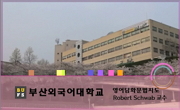This study analyzes the discourse functions of ‘ne’ with a focus on the aspects of how these markers are demonstrated in the Korean language learners corpus. Then, it examines the variances manifested in their discourse functions according to the ...
http://chineseinput.net/에서 pinyin(병음)방식으로 중국어를 변환할 수 있습니다.
변환된 중국어를 복사하여 사용하시면 됩니다.
- 中文 을 입력하시려면 zhongwen을 입력하시고 space를누르시면됩니다.
- 北京 을 입력하시려면 beijing을 입력하시고 space를 누르시면 됩니다.

한국어 학습자의 숙달도에 따른 {네}의 담화 기능 연구 = A Study on the Discourse Function of ‘Ne( )’ According to Korean Learners’ Proficiency
한글로보기https://www.riss.kr/link?id=A108142579
-
저자
김영진 (상명대학교)
- 발행기관
- 학술지명
- 권호사항
-
발행연도
2022
-
작성언어
Korean
-
주제어
한국어 학습자 말뭉치 ; 응답표지 ; 담화 기능 ; 네 ; 숙달도 ; response marker ; Korean learners corpus ; discourse function ; Ne ; proficiency
-
등재정보
KCI등재
-
자료형태
학술저널
-
수록면
119-138(20쪽)
-
KCI 피인용횟수
0
- 제공처
-
0
상세조회 -
0
다운로드
부가정보
다국어 초록 (Multilingual Abstract)
This study analyzes the discourse functions of ‘ne’ with a focus on the aspects of how these markers are demonstrated in the Korean language learners corpus. Then, it examines the variances manifested in their discourse functions according to the learner’s level of Korean proficiency. With the basic meaning of giving an affirmative response, the Korean response markers ‘ne’ are used to reply in the affirmative to another speaker’s question. In the Korean learners corpus, ‘ne’ usage reveals a variety of aspects in addition to their function as response markers. The study finds that ‘ne’ are also used as non-response markers to fulfill functions other than providing affirmative response.
This study classified the ‘ne’ usage expressed in learner's free speech into [+Response Marker] and [-Response Marker], which are then specified in accordance with each discourse function.
The results of the analysis show that beginner learners tend to use ‘ne’ to deliver to the speaker a signal that he/she is being perceptive to their speech as a lingual response. For intermediate and advanced learners, the discourse function of ‘ne’ varied. Basically, however, the use of ‘ne’ was aimed as a strategy to keep up the cooperative conversation by carrying on the function of affirmative response to the speaker's speech. This study is significant in that it establishes pragmatic descriptions applicable to Korean language education as well as providing useful educational information for Korean learners.
동일학술지(권/호) 다른 논문
-
회복적 서클을 활용한 비대면 다문화 교양교육 수업 사례 - D시 이슬람사원 건립 갈등 이슈를 중심으로
- 한국문화융합학회
- 신난희
- 2022
- KCI등재
-
- 한국문화융합학회
- 정은주
- 2022
- KCI등재
-
일본사회의 국가권력과 종교의 관계 - 일본회의와 신도의 상호관계를 중심으로 -
- 한국문화융합학회
- 김미숙
- 2022
- KCI등재
-
- 한국문화융합학회
- 정지선
- 2022
- KCI등재
분석정보
인용정보 인용지수 설명보기
학술지 이력
| 연월일 | 이력구분 | 이력상세 | 등재구분 |
|---|---|---|---|
| 2026 | 평가예정 | 재인증평가 신청대상 (재인증) | |
| 2022-03-24 | 학술지명변경 | 한글명 : 문화와 융합 -> 문화와융합 |  |
| 2022-03-16 | 학회명변경 | 영문명 : The Korean Society of Culture and Convergence -> The Society of Korean Culture and Convergence |  |
| 2020-01-01 | 평가 | 등재학술지 유지 (재인증) |  |
| 2017-01-01 | 평가 | 등재학술지 선정 (계속평가) |  |
| 2015-01-01 | 평가 | 등재후보학술지 선정 (신규평가) |  |
| 2014-03-04 | 학회명변경 | 한글명 : 문학과언어학회 -> 한국문화융합학회영문명 : Munhak Kwa Eoneo Hakhoi -> The Korean Society of Culture and Convergence |
학술지 인용정보
| 기준연도 | WOS-KCI 통합IF(2년) | KCIF(2년) | KCIF(3년) |
|---|---|---|---|
| 2016 | 0 | 0 | 0 |
| KCIF(4년) | KCIF(5년) | 중심성지수(3년) | 즉시성지수 |
| 0 | 0 | 0 | 0.13 |




 스콜라
스콜라




